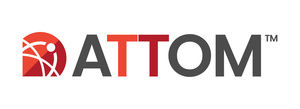IRVINE, Calif., Oct. 7, 2021 /PRNewswire/ -- ATTOM, curator of the nation's premier property database, today released its annual analysis of the best time of the year to buy a home, which shows that the month of October, as well as the winter months, offer homebuyers the best deals – fetching lower premiums than other months of the year.
According to the analysis, buyers who close in October will get the best deal compared to the spring buying season. While the premium is still above market value, homebuyers are only dealing with a 2.9% premium, as opposed to the month of May, when homebuyers are experiencing an 11.5% premium. This analysis of more than 33 million single family home and condo sales over the past eight years is evidence of the continuation of a hot sellers' market (see full methodology below).
2013 to 2020 Sales of Single-Family Homes and Condos |
||||
Month |
Number of Sales |
Median Sales Price |
Median AVM |
Premium |
October |
2,995,387 |
$ 210,000 |
$ 204,000 |
2.9% |
December |
2,681,413 |
$ 212,000 |
$ 205,036 |
3.4% |
November |
2,523,575 |
$ 211,875 |
$ 204,000 |
3.9% |
January |
2,068,122 |
$ 187,500 |
$ 180,468 |
3.9% |
February |
1,984,843 |
$ 187,500 |
$ 178,000 |
5.3% |
September |
2,957,165 |
$ 213,500 |
$ 201,000 |
6.2% |
August |
3,319,970 |
$ 216,000 |
$ 203,000 |
6.4% |
March |
2,602,885 |
$ 197,000 |
$ 185,000 |
6.5% |
April |
2,730,574 |
$ 201,286 |
$ 187,000 |
7.6% |
July |
3,325,150 |
$ 219,000 |
$ 201,300 |
8.8% |
June |
3,308,640 |
$ 217,000 |
$ 199,000 |
9.0% |
May |
3,025,737 |
$ 209,000 |
$ 187,374 |
11.5% |
October Is Ripe for Homebuyers Infographic
The analysis also looked at the best days to buy at the national level (December) and best months to buy at the state level.
Best Days to Buy
Nationally, days that fall in December offer the lowest premium for homebuyers. With December 5th seeing a 1.6% premium, December 26th a 2% premium, January 6th a 2.2% premium, November 9th a 2.3% premium and December 31st a 2.4% premium. A far cry from the month of May, where May 23rd and 27th offer a 17.4% premium, May 20th a 16.6% premium, May 16th a 15.6% premium and May 19th a 15.4% premium.
Best Months to Buy by State
According to the study, the states realizing the biggest discounts below full market value were Delaware (-7.9% in February); Tennessee (-7% in January); New Jersey (-4.9% in February); Maryland (-4.8% in November); and Ohio (-4.8% in January).
Methodology
For this analysis ATTOM looked at any calendar day in the last eight years (2013 to 2020) with at least 10,000 single family home and condo sales. There were 362 days (including leap year data) that matched this measure, with the four exceptions being Jan. 1, July 4, Nov. 11 and Dec. 25. To calculate the premium or discount paid on a given day, ATTOM compared the median sales price for homes with a purchase closing on that day with the median automated valuation model (AVM) for those same homes at the time of sale.
About ATTOM
ATTOM provides premium property data to power products that improve transparency, innovation, efficiency and disruption in a data-driven economy. ATTOM multi-sources property tax, deed, mortgage, foreclosure, environmental risk, natural hazard, and neighborhood data for more than 155 million U.S. residential and commercial properties covering 99 percent of the nation's population. A rigorous data management process involving more than 20 steps validates, standardizes, and enhances the real estate data collected by ATTOM, assigning each property record with a persistent, unique ID — the ATTOM ID. The 20TB ATTOM Data Warehouse fuels innovation in many industries including mortgage, real estate, insurance, marketing, government and more through flexible data delivery solutions that include bulk file licenses, property data APIs, real estate market trends, and more. Also, introducing our latest solution, that offers immediate access and streamlines data management – ATTOM Cloud.
Media Contact:
Christine Stricker
949.748.8428
[email protected]
Data and Report Licensing:
949.502.8313
[email protected]
SOURCE ATTOM






Share this article